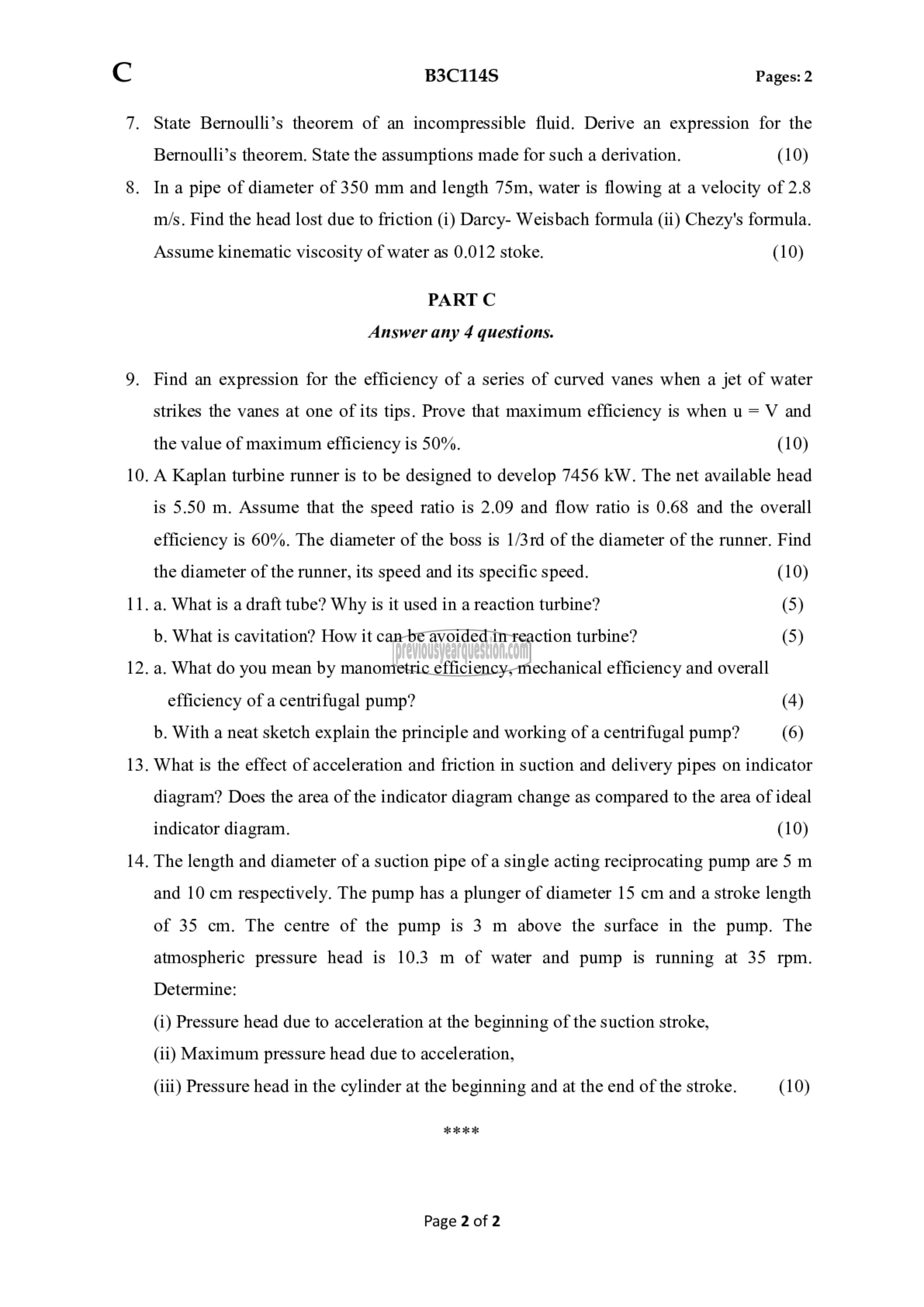APJ ABDUL KALAM TECHNOLOGICAL UNIVERSITY Previous Years Question Paper & Answer
Semester : SEMESTER 3
Subject : Fluid Mechanics & Machinery
Year : 2017
Term : JULY
Branch : AERONAUTICAL ENGINEERING
Scheme : 2015 Full Time
Course Code : ME 200
Page:2
10.
11.
12.
13.
14,
301145 Pages: 2
State Bernoulli’s theorem of an incompressible fluid. Derive an expression for the
Bernoulli’s theorem. State the assumptions made for such a derivation. (10)
In a pipe of diameter of 350 mm and length 75m, water is flowing at a velocity of 2.8
m/s. Find the head lost due to friction (i) Darcy- Weisbach formula (ii) Chezy's formula.
Assume kinematic viscosity of water as 0.012 stoke. (10)
PART C
Answer any 4 questions.
Find an expression for the efficiency of a series of curved vanes when a jet of water
strikes the vanes at one of its tips. Prove that maximum efficiency is when u = V and
the value of maximum efficiency is 50%. (10)
A Kaplan turbine runner is to be designed to develop 7456 kW. The net available head
is 5.50 m. Assume that the speed ratio is 2.09 and flow ratio is 0.68 and the overall
efficiency is 60%. The diameter of the boss is 1/3rd of the diameter of the runner. Find
the diameter of the runner, its speed and its specific speed. (10)
a. What is a draft tube? Why is it used in a reaction turbine? (5)
b. What is cavitation? How it can be avoided in reaction turbine? (5)
a. What do you mean by manometric efficiency, mechanical efficiency and overall
efficiency of a centrifugal pump? (4)
b. With a neat sketch explain the principle and working of a centrifugal pump? (6)
What is the effect of acceleration and friction in suction and delivery pipes on indicator
diagram? Does the area of the indicator diagram change as compared to the area of ideal
indicator diagram. (10)
The length and diameter of a suction pipe of a single acting reciprocating pump are 5 m
and 10 cm respectively. The pump has a plunger of diameter 15 cm and a stroke length
of 35 cm. The centre of the pump is 3 m above the surface in the pump. The
atmospheric pressure head is 10.3 m of water and pump is running at 35 rpm.
Determine:
(i) Pressure head due to acceleration at the beginning of the suction stroke,
(ii) Maximum pressure head due to acceleration,
(iii) Pressure head in the cylinder at the beginning and at the end of the stroke. (10)
aK
Page 2 of 2
